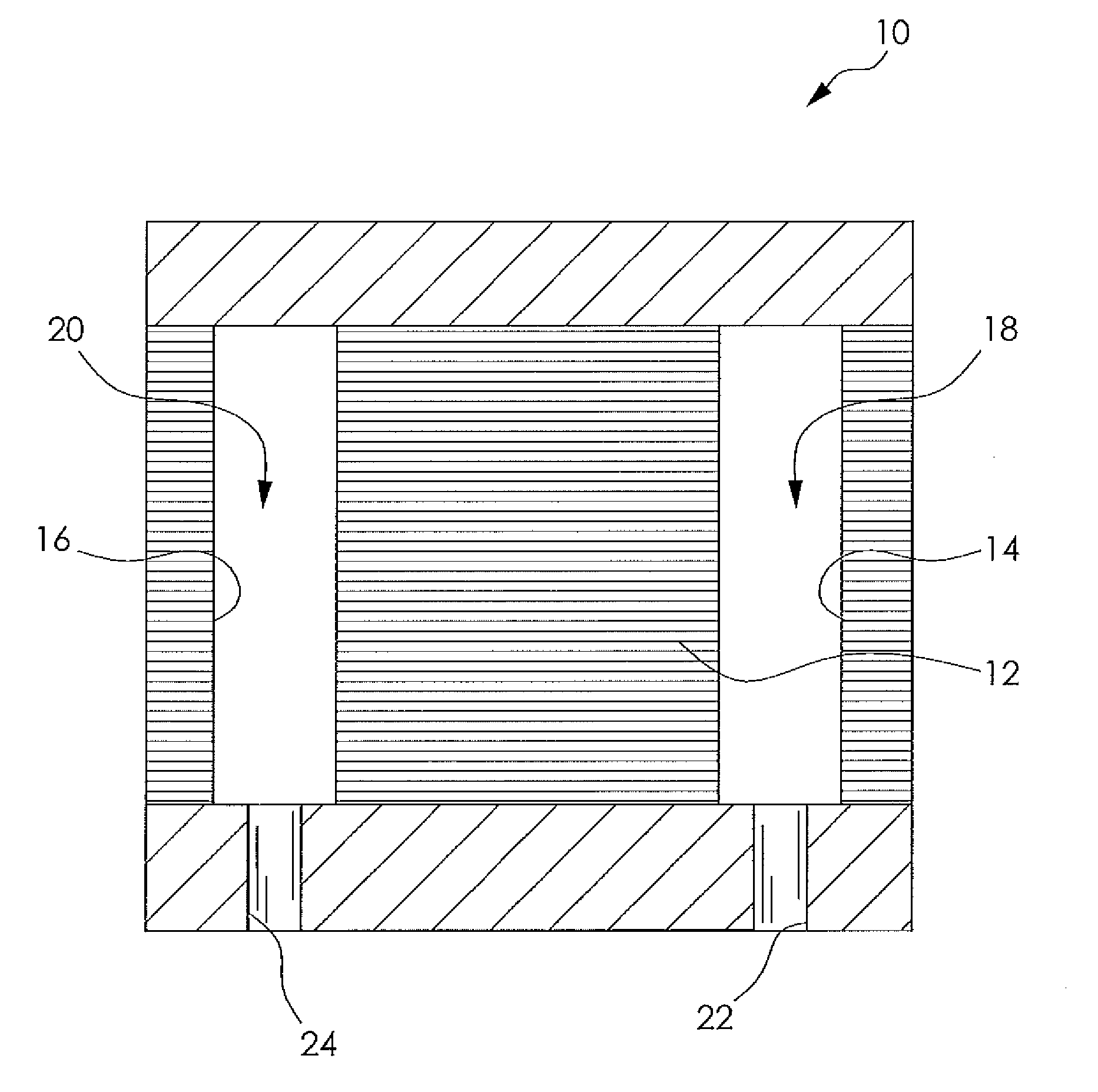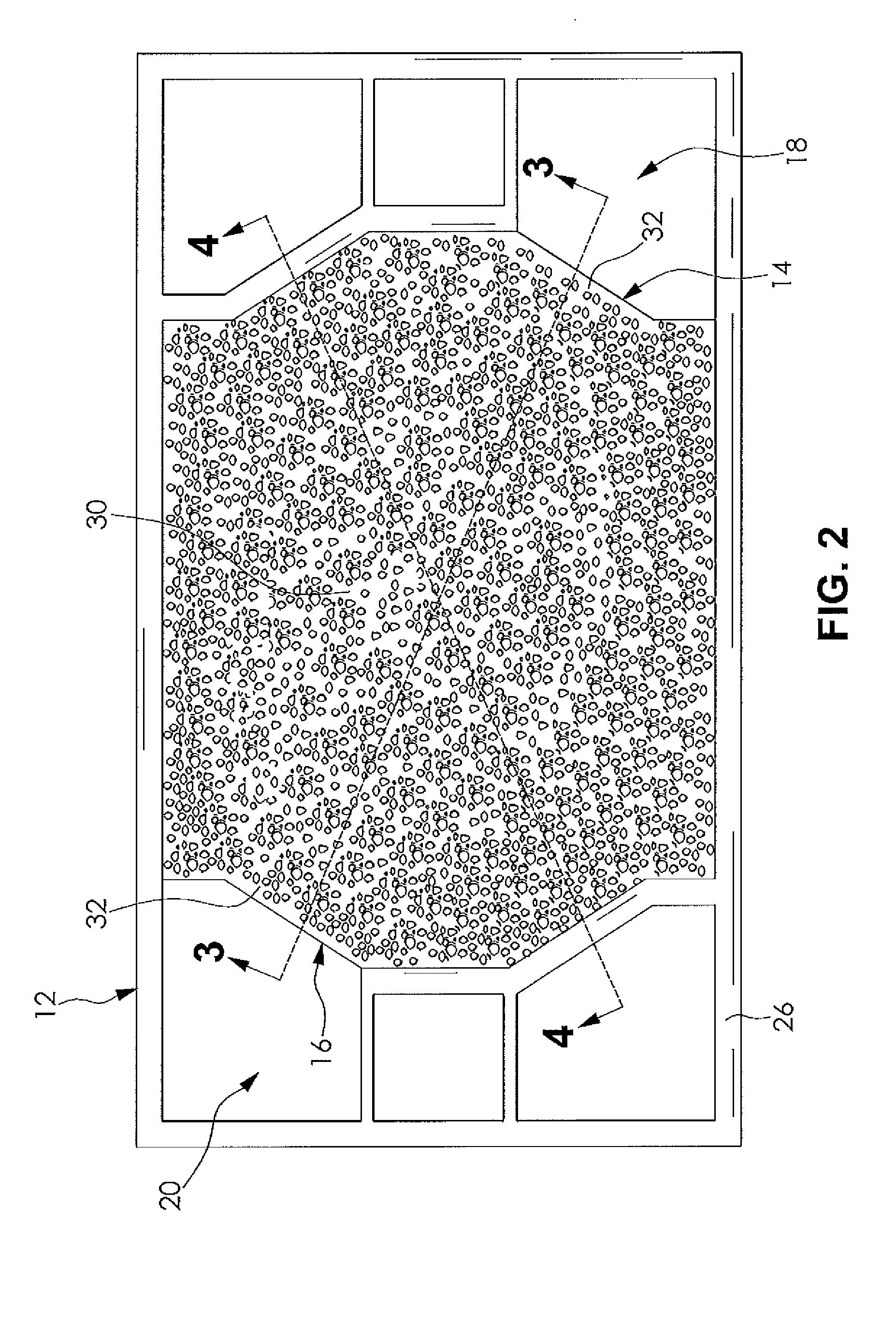Continuous porous flow distributors for a fuel cell
a distributor and porous flow technology, applied in the field of fuel cell systems, can solve the problems of reactant flow maldistribution, poor fuel cell performance, increased manufacturing costs and the use of additional components, etc., and achieves the effect of facilitating water transportation, reducing the number of required components, and reducing manufacturing costs
- Summary
- Abstract
- Description
- Claims
- Application Information
AI Technical Summary
Benefits of technology
Problems solved by technology
Method used
Image
Examples
Embodiment Construction
[0020]The following description is merely exemplary in nature and is not intended to limit the present disclosure, application, or uses. It should also be understood that throughout the drawings, corresponding reference numerals indicate like or corresponding parts and features.
[0021]FIG. 1 shows a fuel cell assembly 10 according to an embodiment of the present disclosure. The fuel cell assembly 10 includes a plurality of stacked fuel cells 12. Each of the fuel cells 12 includes an inlet port 14 and an outlet port 16. The fuel cells 12 are stacked with the inlet port 14 and the outlet port 16 of each fuel cell 12 substantially aligned with the respective inlet port 14 and outlet port 16 of an adjacent plate or fuel cell 12. Collectively, the inlet ports 14 of each of the fuel cells 12 form an inlet header 18 and the outlet ports 16 of each of the fuel cells 12 form an outlet header 20. It is understood that the diameter, quantity, and length of the inlet header 18 will depend on the...
PUM
 Login to View More
Login to View More Abstract
Description
Claims
Application Information
 Login to View More
Login to View More - R&D
- Intellectual Property
- Life Sciences
- Materials
- Tech Scout
- Unparalleled Data Quality
- Higher Quality Content
- 60% Fewer Hallucinations
Browse by: Latest US Patents, China's latest patents, Technical Efficacy Thesaurus, Application Domain, Technology Topic, Popular Technical Reports.
© 2025 PatSnap. All rights reserved.Legal|Privacy policy|Modern Slavery Act Transparency Statement|Sitemap|About US| Contact US: help@patsnap.com



